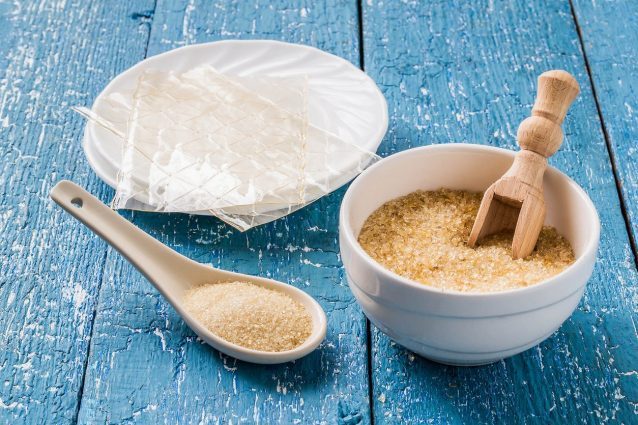How to replace jelly: 5 vegetable products to try
So let’s see 5 of them with doses and tips to make the best use of them.
;Resize,width=742;)
Do you want to prepare a shiny and lump-free cream, or a perfect gelatinous pudding, but you don't have jelly at home? Don't worry, your recipe is safe: just take a look at these five vegetable alternatives, perfect to simply and effectively replace jelly sheets.
Jelly is a food gelatin of animal origin used as a thickener to prepare desserts and savory dishes. Usually sold in sheets, jelly is first dissolved in cold water and then combined hot with the rest of the ingredients; it is often used also to make shiny and inviting tarts, cheesecakes, puddings and many other sweet recipes. As always in cuisine, all the ingredients are important but no one really irreplaceable and, even in the case of the jelly in sheets, there are several good alternatives, all natural and effective. So let’s see 5 of them with doses and tips to make the best use of them.
1. Agar Agar

Certainly the best known, but not the only substitute for jelly, agar agar – also called kanten – is a natural thickener derived from the processing of a red alga called Gelidium. Widely used especially in Asian cuisine, the agar agar is usually sold in the form of a powder and it dissolves directly when hot in the preparation you want to gel. The agar agar is odorless and tasteless, and it does not change the caloric intake of the dishes and guarantees a little pudding texture, but more dense and creamy. Unlike jelly, it is thermoreversible: it melts at a temperature of 90 degrees C and the thickened compound can also be heated and then dissolved several times. To replace the jelly in sheets with the agar agar, calculate that 5 grams of powder correspond to one sheet and this is, basically, the quantity suitable for the preparation of a dessert for 2-4 people.
2. Pectin

Pectin is a natural substitute for jelly derived from fruit, especially green apples. It is suitable for preparing jams and marmalades, but also for yogurt and puddings. Once dissolved at a temperature of 100 degrees C with sugar and lemon juice, the pectin becomes a gel thick enough to be used strictly when hot. As for the quantities: add the pectin little by little until the desired consistency is obtained.
3. Carrageenan

Like agar agar, carrageenan is a thickener derived from the processing of red algae and it dissolves directly when hot, at a temperature above 65 degrees C. Carrageenan, used correctly in the proportions we have already seen for agar agar, allows to obtain a gelatinous and shiny consistency and, like agar agar, is thermoreversible. Small drawback: carrageenan is not readily available except in specialized stores or online.
4. Corn starch

Corn starch is a natural thickener derived from the corn kernel. It is used in cuisine to give consistency to sauces, soups, velvety and sweet preparations such as puddings and creams. For these reasons, corn starch is an excellent natural substitute for jelly: it has a neutral taste and it does not change the caloric intake of your dish. To use it, dissolve it in water or hot milk and add it little by little to the ingredients you want to thicken, until you get the desired consistency.
5. Potato starch

Jelly can also be easily replaced with potato starch, an odorless starch that has a strong thickening power thanks to its ability to easily absorb liquids. Perfect for desserts and particularly leavened preparations such as sponge cake and pound cake, potato starch is naturally gluten-free, as well as low in fat. In addition to replacing jelly, starch is also used in some cases as an alternative to eggs.
;Resize,width=767;)
;Resize,width=712;)
;Resize,width=712;)
;Resize,width=712;)
